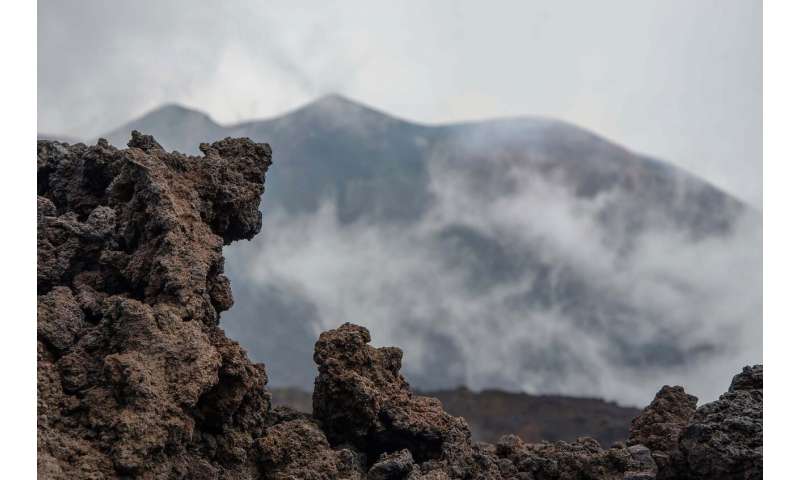
Greenhouse gas emissions released directly from the movement of volcanic rocks are capable of creating massive global warming effects—a discovery which could transform the way scientists predict climate change, a new study reveals.
Scientists' calculations based on how carbon-based greenhouse gas levels link to movements of magma just below earth's surface suggest that such geological change has caused the largest temporary global warming of the past 65 million years.
Large Igneous Provinces (LIPs) are extremely large accumulations of igneous rocks which occur when magma travels through the crust towards the surface.
Geologists at the University of Birmingham have created the first mechanistic model of carbon emissions changes during the Paleocene-Eocene Thermal Maximum (PETM) - a short interval of maximum temperature lasting around 100,000 years some 55 million years ago.
They published their findings in Nature Communications, after calculating carbon-based greenhouse gas fluxes associated with the North Atlantic Igneous Province (NAIP) - one of Earth's largest LIPs that spans Britain, Ireland, Norway and Greenland.
Dr. Stephen Jones, Senior Lecturer in Earth Systems at the University of Birmingham, commented: "Large Igneous Provinces are linked to spikes of change in global climate, ecosystems and the carbon cycle throughout Mesozoic time—coinciding with the Earth's most devastating mass extinctions and oceans becoming strongly depleted of oxygen.
"We calculated carbon-based greenhouse gas fluxes associated with the NAIP—linking measurements of the process that generated magma with observations of the individual geological structures that controlled gas emissions. These calculations suggest the NAIP caused the largest transient global warming of the past 65 million years.
"More geological measurements are required to reduce the uncertainty range of our solid Earth emissions model, but we believe clarification of this carbon cycle behaviour will impact modelling and management of future climate change."
The researchers' simulations predict peak emissions flux of 0.2-0.5 PgC yr-1 and show that the NAIP could have initiated PETM climate change. Their work is the first predictive model of carbon emissions flux from any proposed PETM carbon source directly constrained by observations of the geological structures that controlled the emissions.
Associations between LIPs and changes in global climate, ecosystems and the carbon cycle during the Mesozoic period imply that greenhouse gases released directly by LIPs can initiate global change that persists over 10,000 to 100,000 years.
The PETM is the largest natural climate change event of Cenozoic time and an important yardstick for theories explaining today's long-term increase in the average temperature of Earth's atmosphere as an effect of human industry and agriculture.
During PETM initiation, release of 0.3-1.1 PgC yr-1 of carbon as greenhouse gases to the ocean-atmosphere system drove 4-5°C of global warming over less than 20,000 years—a relatively short period of time.
Citation: Carbon emissions from volcanic rocks can create global warming: study (2019, December 5) retrieved 5 December 2019 from https://ift.tt/366y4B3
This document is subject to copyright. Apart from any fair dealing for the purpose of private study or research, no part may be reproduced without the written permission. The content is provided for information purposes only.
Science - Latest - Google News
December 05, 2019 at 05:00PM
https://ift.tt/368Y1QC
Carbon emissions from volcanic rocks can create global warming: study - Phys.org
Science - Latest - Google News
https://ift.tt/2Kb7H4e
Shoes Man Tutorial
Pos News Update
Meme Update
Korean Entertainment News
Japan News Update
Bagikan Berita Ini














0 Response to "Carbon emissions from volcanic rocks can create global warming: study - Phys.org"
Post a Comment